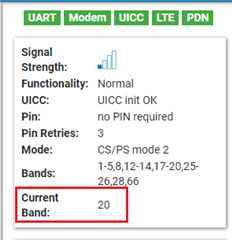Hi,
In order to speed up network registration times I'm trying to do a band lock to 13,4 (Verizon & ATT within USA), so I'm issuing the below AT command which responds with OK
AT%XBANDLOCK=2,1000000001000
However when doing the subsequent AT+CFUN=1 the response is +CEREG: 2,"FFFE","FFFFFFFF",7
Removing the AT%XBANDLOCK and the modem responds properly with a response of +CEREG: 2,"910F","066E8210",7 followed by +CEREG: 5....
Any idea why the band lock causes network registration failure?
Thanks!



